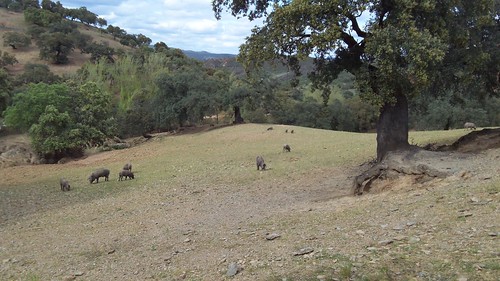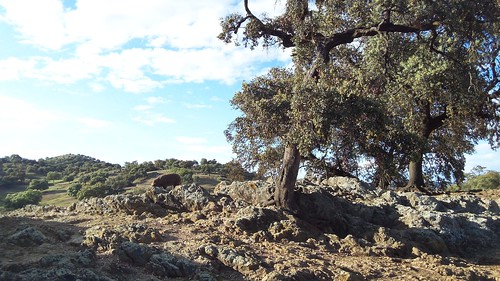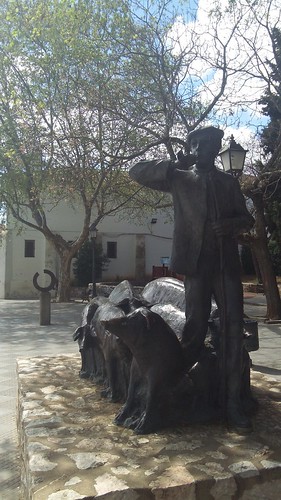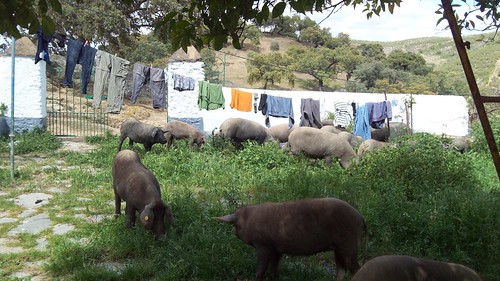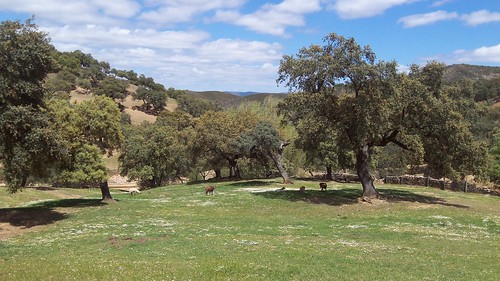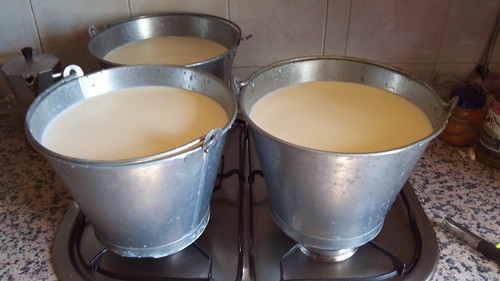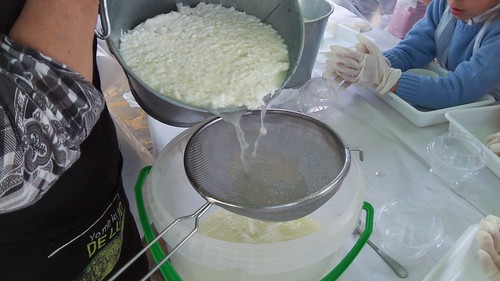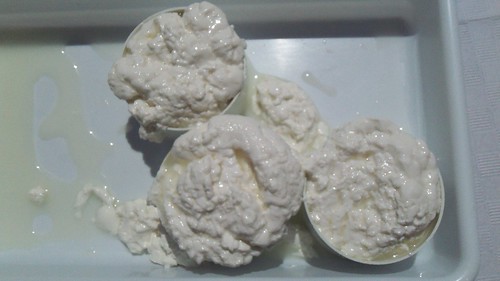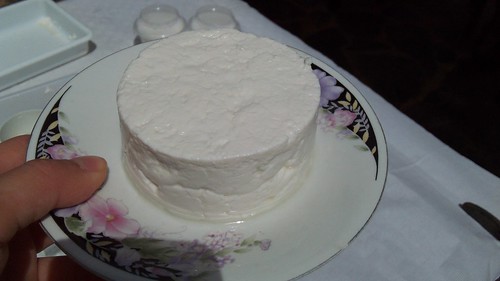You cannot underestimate the importance of jamon in Spain. Rafael (the farmer I worked for) once said, no hay jamon, no hay nada (no jamon, no nothing). What a relief it has been to find the pigs of the famous Jamon Iberico 100% Bellota (the best spanish ham in the world), trotting merrily across the spectacular Sierra de Aracena. It's like meeting your favourite actor and finding out they are a really nice guy.
I'm farming in the province of Huelva, the home of jamon. Every street, bar and shop you look in, reaffirms how proud they are of it. In the farmhouse, legs of jamon, worth over 250 euros each, were kept hanging under lock and key. The curing room was separated from my friends bedroom by a locked door, but the beautiful smell of jamon permeated through. It was our little jamon narnia.
On my one day off, I pilgrimaged to the Museo del Jamon in Aracena, and what a treat that was. I learnt that four factors make the jamon iberico so special. Sumptuous natural grazing, the breed of pig, quality of air, and knowledge of curing passed through generations. Between November and March, acorns fall from Oak trees and the pigs fatten on these natural treats, a process known as montanera. During these winter months, I too begin a montanera, starting with mince pies and ending with mini eggs. Acorns are poor in proteins but rich in carbohydrates, which transforms into fat. As the pigs roam to find the acorns, the shuffling helps the fat distribute evenly. The pigs eat three different types of acorns, and here is the science bit:
To put on 1kg of fat, a pig would need to eat 9kg of Holm Oak acorns
To put on 1kg of fat, a pig would need to eat 14kg of Cork Oak acorns
To put on 1kg of fat, a pig would need to eat 18kg of Portuguese Oak acorns
Grades of jamon de bellota (ham from pigs raised on acorns) vary depending on whether enough Oak trees grace the farmers land, providing ample grazing. If not, they will have to supplement their diets with animal feed, which devalues the quality of the jamon and lowers the price at market. I am beginning to be able to taste the difference, the 100% bellota is ridiculously delicious.
In the pre-supermarket era, almost every family in the Sierra would have had a pig. The concejil (a pig shepherd) would go from door to door, collecting and then leading the pigs to graze the communal pastures. When winter came, families would, and still do, get together for La Matanza (the killing and curing of the pig). As an important source of protein, no part of the pig goes to waste, a perfect example of nose to tail eating. Economically, if you sell the two jamones (back legs) then you cover the cost of raising the pig, and then technically you eat the rest for free. Though I'm not sure I could ever sell the best bit.
The jamones are covered in salt and then left to hang for two years (or if the leg is particularly big, sometimes longer). The air in the Sierra is, as with the cheese, perfect for curation. Here they cannot use artificial conditions, only opening and closing windows to alter the temperature.
In reward for my work, I was able to try some of the farm's jamon. The texture, colour and flavour were sublime, though it's when it melts in your mouth, that you know you are eating good jamon. It was like the finest of butters. Jamon is rich in proteins, minerals, vitamins, and helps the brain function. It's also good for the nervous system, and I can testify that when I eat it, I get crazy happy.
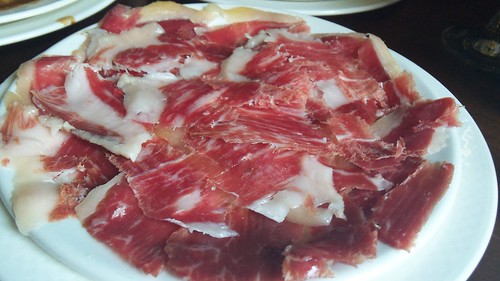

(pitch) fork notes
- In Ancient Greece, Hipocrates recommended the ingestion of jamon to sick people.
- Jamon was eaten on the voyages to the New World, and as new spices were encountered, new combinations such as chorizo were born.
- White dots that appear in the jamon are a few crystallisations produced by an amino acid. They improve the flavour, so don't fret and enjoy.
- It's a lie that pigs always sleep on the same side and so one leg is better than the other. This is apparently the question everyone asks in the museum, doh.
- In Gallego (language spoken in Galicia), jamon is called shamon. This will never cease to make me smile. he he.
(the day we herded pigs through our garden)

